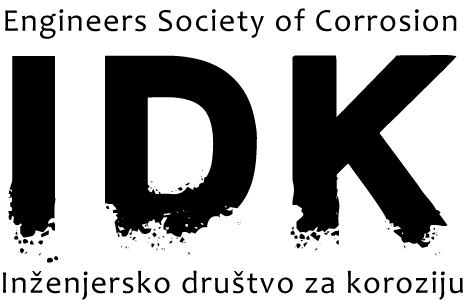Study on the effectiveness of SAP, PEG-400, and PVA as self-curing agents: A comparative approach
DOI:
https://doi.org/10.62638/ZasMat1336Abstract
Concrete's performance essentially depends on the hydration process, requiring adequate moisture and a controlled environment for curing. The traditional curing is challenging in water-scarce regions and in high-altitude areas. The self-curing concrete as an emerging sustainable and efficient alternative in conventional curing method scenarios and in challenging environments. Self-curing, or internal curing, is an innovative solution that ensures sufficient moisture for hydration and minimizes evaporation to enhance properties of concrete. This study explores the impact of various self-curing agents Superabsorbent Polymers (SAP), Polyethylene Glycol-400 (PEG-400), and Polyvinyl Alcohol (PVA) on the fresh and mechanical properties of self-curing concrete. The nine mix designs were developed, with self-curing agents incorporated at dosages of 1%, 2%, and 3% by weight of cement. The mechanical properties analysed include compressive strength, split tensile strength, and flexural strength, while workability was assessed using slump tests. The results expose that PEG-400 at 1% dosage the highest performance in terms of strength and workability, with compressive, tensile, and flexural strengths of 26.29 N/mm², 2.19 N/mm², and 2.27 N/mm², respectively. The SAP exhibited moderate performance with enhanced internal curing, while PVA offered balanced hydration benefits but lower strength compared to PEG-400. The increasing dosages of all agents led to a decline in mechanical performance due to reduced hydration efficiency and increased viscosity. The PEG-400 of optimizing self-curing agents to achieve a balance between curing efficiency and mechanical performance, contributing to the development of sustainable, high-quality concrete with reduced water consumption.
Keywords:
Self-Curing Concrete, PEG-400, SAP, PVA, Mechanical Strength, Sustainable ConstructionReferences
D. Xu, J. Tang, X. Hu, C. Yu, F. Han, S. Sun, J. Liu (2023) The influence of curing regimes on hydration, microstructure and compressive strength of ultra-high performance concrete: A review, J. Build. Eng. 76, 107401. https://doi.org/10.1016/j.jobe.2023.107401
C. Zhong, W. Lu, W. Mao, S. Xin, J. Chen, J. Zhou, C. Shi (2024) Research on capillary water absorption characteristics of modified recycled concrete under different freeze–thaw environments, Appl. Sci. 14(3), 1247. https://doi.org/10.3390/app14031247.
H. Shemer, S. Wald, R. Semiat (2023) Challenges and solutions for global water scarcity, Membranes (Basel). 13(6), 612. https://doi.org/10.3390/membranes13060612.
[M. N. Patil, S. D. Dubey, H. S. Patil (2023) Self-curing concrete: a state-of-the-art review, Innov. Infrastruct. Solut. 8(12), 313. https://doi.org/10.1007/s41062-023-01282-8.
G. Sundaramoorthy, P. Meyyappan, (2024) Role of self-curing mechanism in lightweight concrete: A state-of-the-art report, Int. Rev. Appl. Sci. Eng. 15(2), 200-210. https://doi.org/10.1556/1848.2023.00695.
K. V. S. Gopala Krishna Sastry, P. M. Kumar, (2018) Self-curing concrete with different self-curing agents, IOP Conf. Ser. Mater. Sci. Eng. (Vol. 330, p. 012120). https://doi.org/10.1088/1757-899X/330/1/012120.
B. Zhou, K. Wang, P. C. Taylor, Y. Gu (2024) Superabsorbent Polymers for Internal Curing Concrete: An Additional Review on Characteristics, Effects, and Applications, J. Mater. 17(22), 5462. https://doi.org/10.3390/ma17225462.
X. Huang, X. Liu, H. Rong, X. Yang, Y. Duan, T. Ren (2022) Effect of super-absorbent polymer incorporation method on mechanical and shrinkage properties of internally cured concrete, J. Mater. 15(21), 7854. https://doi.org/10.3390/ma15217854.
L. Rachana, A. Venkateswararao (2021) Effect of self-curing agent on mechanical properties of concrete with GGBS replacement, IOP Conf. Ser. Earth Environ. Sci. (Vol. 796, No. 1, p. 012062). https://doi.org/10.1088/1755-1315/796/1/012062.
J. Liu, M. Wang, N. Liu, L. Teng, Y. Wang, Z. Chen, C. Shi (2023) Development of ultra-fine SAP powder for lower-shrinkage and higher-strength cement pastes made with ultra-low water-to-binder ratio, Compos. B: Eng. 262, 110810. https://doi.org/10.1016/j.compositesb.2023.110810.
S. Gowdra Virupakshappa, A. Shrishail Basappa, M. Thimmarayappa, C. K. N. Narayana, A. Buradi, A. F. Emma (2024) Modelling and analysis of strength and durability properties of internal curing concrete using PEG 400 and artificial neural network, Discov. Sustain. 5(1), 80. https://doi.org/10.1007/s43621-024-00240-3.
P. Magudeaswaran, V. Kumar, K. V. Krishna, A. Nagasaibaba, R. Ravinder (2023) Investigational studies on the impact of Supplementary Cementitious Materials for identifying the strength and durability characteristics in self-curing concrete, Mater. Today Proc. https://doi.org/10.1016/j.matpr.2023.03.161.
S. Panwar, A. Jindal (2023) A review on self-curing agents, Innov. Infrastruct. Solut. 8 282. https://doi.org/10.1007/s41062-023-01237-z.
N. Dharani, M.R. Nivitha (2024) Use of polyvinyl alcohol and polyethylene glycol as self-curing agents for concrete pavement. Eur. J. Environ. Civ. Eng. 1–21. https://doi.org/10.1080/19648189.2024.2312476.
U. Nabi, S. Chauhan (2023) A study on self curing concrete incorporated with light weight aggregates, polyethylene glycol & polyvinyl alcohol, Mater. Today Proc. https://doi.org/10.1016/j.matpr.2023.04.286.
IS-12269 (1987) Specification for 53 grade ordinary Portland cement, Bur. Indian Stand. New Delhi,India.
IS:383 (2016) Specification for Coarse and Fine Aggregates From Natural Sources for Concrete, Indian Stand. 1–24.
IS 456 (2000) Plain Concrete and Reinforced, Bur. Indian Stand. Dehli.1–114.
V. Mechtcherine, M. Wyrzykowski, C. Schröfl, D. Snoeck, P. Lura, N. De Belie, A. Mignon, S. Van Vlierberghe, A.J. Klemm, F.C.R. Almeida, J.R. Tenório Filho, W.P. Boshoff, H.-W. Reinhardt, S.-I. Igarashi (2021) Application of super absorbent polymers in concrete construction update of RILEM state-of-the-art report, Mater. Struct. 54, 80. https://doi.org/10.1617/s11527-021-01668-z.
Z. Ahmad, S. Salman, S.A. Khan, A. Amin, Z.U. Rahman, Y.O. Al-Ghamdi, K. Akhtar, E.M. Bakhsh, S.B. Khan, (2022) Versatility of Hydrogels: From Synthetic Strategies, Classification, and Properties to Biomedical Applications, Gels. 8. https://doi.org/10.3390/gels8030167.
D. Thirumoolan, T. Siva, R. Ananthakumar, K.S.N. Nambi (2023) Alginate-Based Superabsorbents, In Bio-Based Superabsorbents Recent Trends, Types, Appl. Recycl. pp. 93–114. https://doi.org/10.1007/978-981-99-3094-4_6.
J.P. Rizzuto, M. Kamal, H. Elsayad, A. Bashandy, Z. Etman, M.N. Aboel Roos, I.G. Shaaban (2020) Effect of self-curing admixture on concrete properties in hot climate conditions, Constr. Build. Mater. 261 119933. https://doi.org/10.1016/j.conbuildmat.2020.119933.
T. Udayabanu, N.P. Rajamane, C. Makendran, R. Gobinath, S. Chandra Chary (2020) Self-Curing Concrete Using Water-Soluble Polymerfor Developing Countries, IOP Conf. Ser. Mater. Sci. Eng. 981. https://doi.org/10.1088/1757-899X/981/3/032088.
J. Fan, G. Li, S. Deng, Z. Wang (2019) Mechanical properties and microstructure of polyvinyl alcohol modified cement mortar, Appl. Sci. 9. https://doi.org/10.3390/app9112178.
K. S. Kumar, P. S., Reddy, E. Arunakanthi (2022) An experimental study on mechanical and durable properties of self-curing concrete by using Ferro silica slag aggregate, IOP Conf. Ser. Earth Environ. Sci. (Vol. 982, No. 1, p. 012025). https://doi.org/10.1088/1755-1315/982/1/012025.
G. Modupeola, B. Olufunmi, A. Ibrahim (2023) Assessment of strength characteristics of propylene glycol self-curing concrete, 22, 49–54.
IS 10262 (2009) Concrete mix proportioning - Guidelines, Bur. Indian Stand., New Delhi. 1–14.
F.S. Aditto, M.H.R. Sobuz, A. Saha, J.A. Jabin, M.K.I. Kabbo, N.M.S. Hasan, S. Islam (2023) Fresh, mechanical and microstructural behaviour of high-strength self-compacting concrete using supplementary cementitious materials, Case Stud. Constr. Mater. 19, 02395. https://doi.org/10.1016/j.cscm.2023.e02395.
Z. Wu, J. Zhang, H. Yu, Q. Wu, B. Da (2023) Computer-aided investigation of the tensile behavior of concrete: Relationship between direct and splitting tensile strength, Structures. 55, 453–467. https://doi.org/10.1016/j.istruc.2023.06.019.
B.W. Darvell (2022) Mechanical test relevance-A personal perspective on some methods and requirements, Front. Dent. Med. 3 1–13. https://doi.org/10.3389/fdmed.2022.1084006.
I.A. Ja’e, A.R. Salih, A. Syamsir, T.H. Min, Z. Itam, C.V. Amaechi, V. Anggraini, J. Sridhar(2023) Experimental and predictive evaluation of mechanical properties of kenaf-polypropylene fibre-reinforced concrete using response surface methodology, Dev. Built Environ. 16, 100262. https://doi.org/10.1016/j.dibe.2023.100262.
B. Sen, D. Chanda, R. Saha (2024) Mechanical strength characterization and seismic performance of rammed earthen walls built on eco-friendly lateritic soil and sustainable stabilizing materials, Sādhanā. 49, 37. https://doi.org/10.1007/s12046-023-02375-x.
IS 516 (1959) Method of Tests for Strength of Concrete, Bur. Indian Stand. 1–30.







